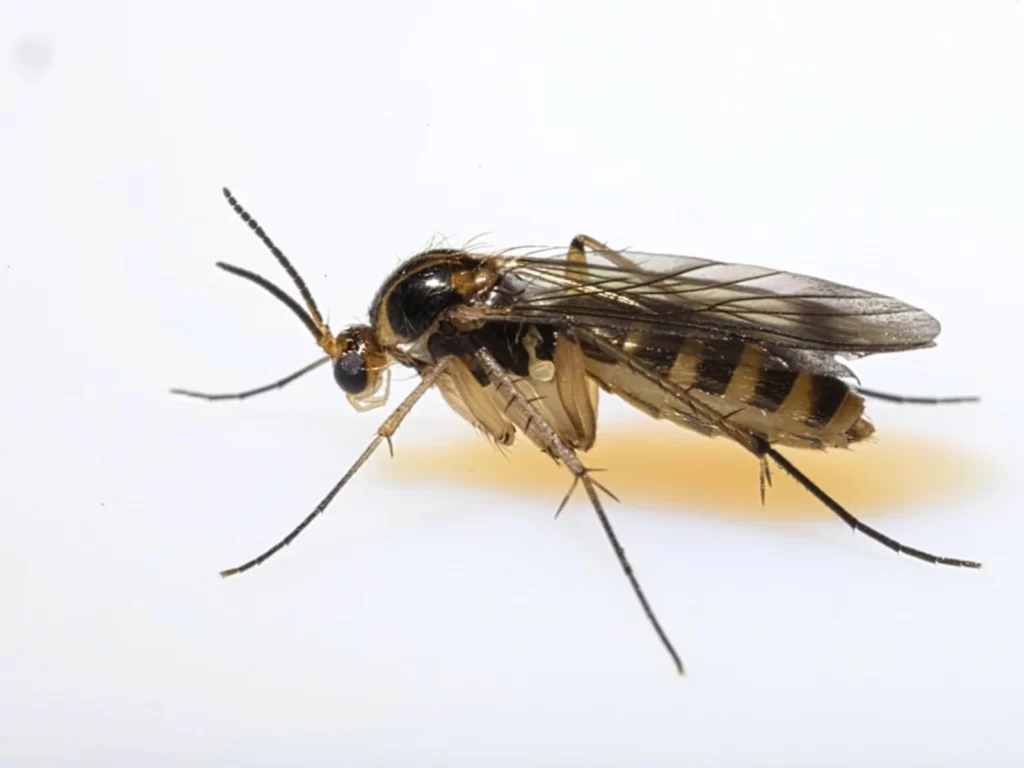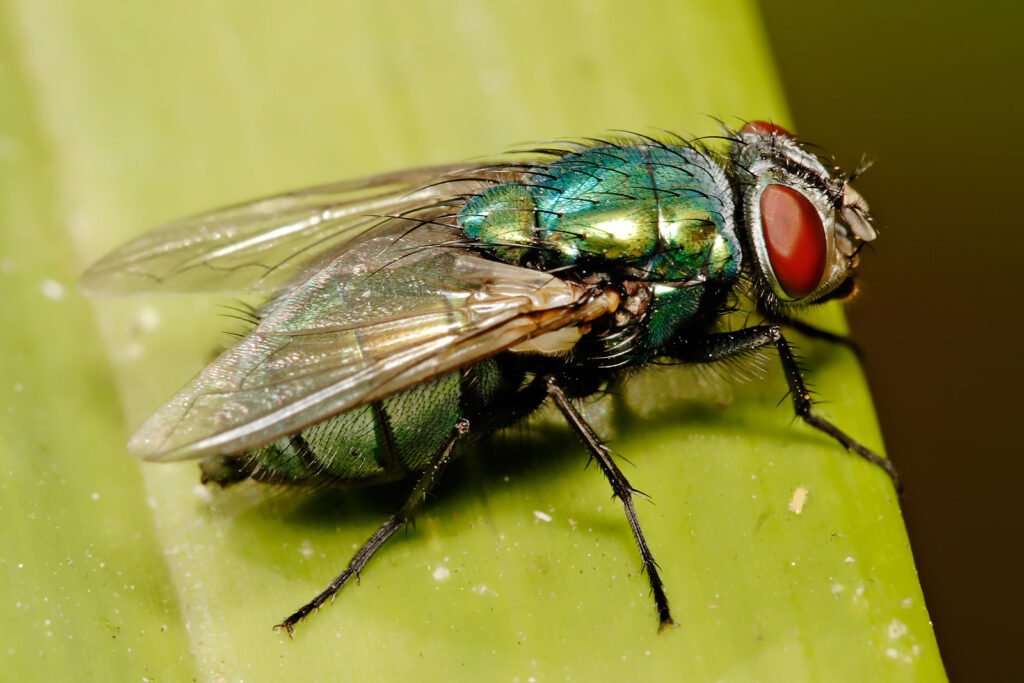Are you like me, searching for ways to rid of flies? Did you know there are actually certain factors which attract them and by understanding this information you could use these as weapons against flies?
This article will take a close look at what attracts flies, as well as how this knowledge can help get rid of them once and for all.
Table Of Contents
- 1 10 Most Common Fly Types and Their Potential Threats
- 2 What attracts flies? – 10 Things That You Should Keep Eye On
- 2.1 1. Sweetness Attracts Flies
- 2.2 2. Flys are Attracted To Movement.
- 2.3 3. Flies are Drawn To Bright Colors, Like Blue and Yellow
- 2.4 4. Flies are Attracted To Decaying Matter
- 2.5 5. Flies are Attracted To Warm Environments or Locations that Emit Heat.
- 2.6 6. Moisture Attracts Flies
- 2.7 7. Flies are Attracted To Light as this Signifies an Potential Food Source
- 2.8 8. Flies are Attracted To Darkness as this Provides Them With Protection From Predators.
- 2.9 9. Flies Attracted To Other Flies, which attract them like magnets.
- 2.10 10. Flys are Attracted to Sounds
10 Most Common Fly Types and Their Potential Threats
1. House Flies

House flies have the capacity of spreading over 65 diseases to humans, such as typhoid fever, cholera and dysentery.
House flies are attracted to food through visual cues and carbon dioxide emissions from our exhaled breath, then once they land they defecate on it and release enzymes which break down solid food so they can ingest it more easily. So wherever house flies land will likely be contaminated with their feces and saliva which results in anything they land upon becoming contaminated with waste materials from both parties – meaning anything touched by house flies is likely contaminated with their waste products and saliva.
House flies can be annoying pests, but they also pose a significant health threat. House flies have the ability to transmit diseases such as typhoid fever, cholera and dysentery while picking up and transmitting bacteria such as Salmonella and E. coli.
2. Fruit Flies

Fruit flies can be an immense headache for farmers and growers, as they cause extensive damage to crops. Furthermore, they transmit diseases to humans including Salmonella and E. coli which could potentially prove lethal to human beings.
The most widespread type is the Mediterranean fruit fly; other common fruit flies include South American, Oriental and Hawaiian fruit flies that cause damage to fruits and vegetables as well as transmitting diseases to humans.
3. Horse Fly

A “horse fly” refers to any species belonging to the Tabanidae family of flies, typically described as being robust with large eyes and mouthparts, typically fed upon by female horse flies that need blood to produce eggs for her eggs to hatch; these pests pose serious risks to horses and other animals, leading to irritation, swelling and localized reactions on host bodies as well as transmitting diseases between hosts.
4. Drain Flies

Drain flies are small moth-like insects that often gather near drains, sewer systems and other sources of standing water. Their larvae live and feed within these moist environments, often ingestion harmful bacteria and microbes before eventually emerging as adults and spreading these microbes further by flying off and landing near human settlements.
Drain fly infestations can spread diseases such as cholera, dysentery and typhoid fever. Most commonly these diseases are transmitted when food or water that has been contaminated by drain flies is consumed by humans consuming it; but direct contact may also transmit diseases to us humans.
5. Phorid Flies

Phorid flies are small parasitic insects commonly mistaken for gnats or fruit flies, but their feeding habits differ significantly – these parasitic bugs feed off animal blood – including humans!
Phorid flies are known to carry and transmit diseases such as anthrax, bubonic plague and typhus. Additionally, these insects can trigger allergies or asthma attacks in people sensitive to them – in extreme cases even leading to death.
6. Fungus Gnats

Fungus gnats are small dark-colored flies that thrive in moist and damp environments such as potted plants, damp basements or other humid locations. You might spot them around potted plants or near other forms of moisture such as swimming pools.
The larvae feed on organic materials, fungi and algae found in damp soil that feed off of organic waste products like organic materials or moisture-retaining solutions like mulch. When present, this can damage plant roots while decreasing a plant’s ability to take in nutrients and water; severe cases could even result in its death.
7. Crane Fly

Commonly Seen Near Swampy or Wet Areas The crane fly is an aquatic fly that’s often found near swampy or wet areas, often where people gather. Though generally harmless to people, its presence may become bothersome in your home.
Crane flies do not bite or sting and do not transmit diseases; however, their large sizes and irregular flying patterns can be unnerving; accidentally entering homes through open doors or windows may allow one inside. Should one find one within your own residence, the best course of action would be to vacuum up and dispose of it immediately.
8. Blowfly

Blowflies are one of the most commonly found types of flies found around homes and are distinguished by their metallic bodies. Additionally, these insects tend to land on dead animals in order to lay their eggs.
Biting flies are parasitic insects that feed off human and animal blood for sustenance, often transmitting diseases such as malaria, encephalitis and Lyme disease. While they’re rarely found inside homes they can still pose a significant problem when present.
9. Mosquito
There are over 3,500 species of mosquito, each capable of transmitting diseases.
Mosquitoes can transmit numerous diseases, including malaria, dengue fever, yellow fever, chikungunya and zika virus. Mosquitoes have become one of the primary sources of mortality throughout much of the world due to their ability to transmit such infections.
10. Cluster Flies

Cluster flies, so-named for their tendency to form large flocks when flying, are common throughout much of the world. They’re found wherever large bodies of air converge together.
Cluster flies come in many varieties; however, one of the most widespread species found in North America is Pollenia rudis, with dark grey hues and approximately 8 to 10 mm length.
If cluster flies have made themselves at home in your home, you can either vacuum them away with the assistance of a vacuum cleaner or use a fly swatter to eliminate them. You may also prevent further entry by sealing cracks around doors and windows to seal any entryways they might enter through.
What attracts flies? – 10 Things That You Should Keep Eye On
1. Sweetness Attracts Flies
Flies are drawn to sweet substances like fruit juice, nectar and honey as potential food sources, which they quickly devour.
Flies have an innate attraction to anything sweet. This could be linked to food associations: when they smell something sweet they may be drawn towards it hoping that they might find sustenance for themselves.

While humans often enjoy sweet things, flies find sweetness to be irresistible – to the extent that they become addicted to its sweetness! Sugar becomes their drug of choice and keeps coming back for more and more of it!
That is why you may have seen flies buzzing around fruit, sweet drinks, and other treats with sugar in them; they are seeking their next fix, which unfortunately often includes landing on our food!
Though we may never completely eradicate flies from our lives, we can at least take some steps to keep them away.
How to get rid of flies?
As you started to know what attracts flies, Avoid leaving sweet foods out in the open and clean up any spills immediately. Additionally, using a fly trap could catch any flies before they can land on your food sources.
2. Flys are Attracted To Movement.
“Flies” refers to any insect in the order Diptera that are attracted to movement; this includes species such as mosquitoes. Flys tend to be drawn towards any form of movement as a source of attraction.
Flies possess compound eyes with multiple photoreceptors that allow them to see across an expansive visual field and detect movement with extreme precision; even fast movements cannot escape their notice! In fact, they can respond swiftly when something moves quickly enough.
Movement seems to entice flies in numerous ways, one theory being its relationship to their hunting strategy. Flies don’t have great eyesight for seeing details but can detect movement very well, thus drawing them inward to investigate whatever might be moving. They will sometimes fly towards something moving simply so they can examine it better.
Another theory suggests that flies are drawn to movement as it signals food sources. They follow their nose to find it; but if there is no movement at all, they may never find what they need.
How to get rid of flies?
Movement attracts flies for many reasons; thus if you wish to avoid them altogether it would be prudent to stay clear of anything moving.
3. Flies are Drawn To Bright Colors, Like Blue and Yellow
Many species of flies are attracted to different colors; however, blue and yellow are particularly enticing for most.

Flies are drawn to blue because it represents open space and safety for them. Yellow represents something sweet and nutritious; to flies it may mean flowers or fruit which provide food sources.
Flies tend to be drawn to blue and yellow as attractants; some more than others. Some species might even show no preference at all, yet both colors tend to draw them in. But generally speaking, blue and yellow tend to attract them both equally.
How to get rid of flies?
Reducing dark pattern colors and keeping it covered with light color cloths will prevent them from hiding under it.
4. Flies are Attracted To Decaying Matter
Food smells can also attract flies. Just like humans, flies are drawn to any aromas emanating from cooking or decaying food sources. This is one of the major stuff what attracts flies in to your home.
Most flies are drawn to decaying matter as this is where they lay their eggs, as it attracts sulfur dioxide, methane and carbon dioxide emissions that attract various species of flies – houseflies especially can sense when meat has gone bad while fruit flies are drawn by scents from overripe fruit.
One reason flies are attracted to decaying matter is because that is where they lay their eggs. Flies prefer moist environments as this increases their larvae’s chances of surviving and feeding off decaying material; once hatching occurs, larvae feed off decayed matter for sustenance – another reason you often see flies near garbage cans or compost bins.
How to get rid of flies?
If your home is experiencing a fly problem, the cause could lie with decaying matter that is out of sight and hidden from view.
To effectively eliminate flies from your environment, the key is finding their source and eliminating decaying matter – whether this means throwing away old food, cleaning up pet litter boxes or emptying the garbage cans.
5. Flies are Attracted To Warm Environments or Locations that Emit Heat.

Flies are drawn to heat for many reasons, not least of which it provides ideal conditions for flight. Warm air rises higher than surrounding cooler air and provides lift. Furthermore, warmer conditions help flies remain aloft for extended periods.
Heat is attractive to flies because it helps them find food sources more easily. Hotter temperatures tend to produce more active insects that provide essential protein-rich sources of sustenance for their diet, while heat can release scents of flowers or potential food sources, making them easier for flies to find.
Flies are also drawn to heat because it helps them evade predators. Flying more swiftly and erratically can make it more difficult for predators to capture them; additionally, predators tend to be less active at these hotter temperatures giving flies greater chances of escape.
How to get rid of flies?
Keep your place normal temperature, have a good ventilation for inside air to get out. This will prevent the what attracts flies.
6. Moisture Attracts Flies
moisture can also play an integral part in drawing in these annoying bugs. Flies depend on moisture for survival and reproduction; thus if there is an abundance of them around your home it could be due to some form of moisture source that attracts them.

If flies have become an issue in your household, there are a few things you can do to address their presence. Start by identifying where their source of moisture comes from; that could be from leaky faucets, drainage issues or anything else. Once identified, repair it as quickly as possible in order to end your fly issue.
Traps can also help get rid of flies effectively. There are various kinds of fly traps on the market; you should select one that best meets your needs based on its bait attraction or light/heat attraction methods. Once an insect enters one, they won’t be able to escape, leading to its death in due time.
How to get rid of flies?
If you are struggling with flies, there are a few solutions you can try in order to eliminate them. First, identify and treat the source of moisture that attracts flies; once identified, fix it and your fly problem should dissipate.
Another effective method for eliminating them would be traps; there are various types available so choose the one which best meets your needs.
7. Flies are Attracted To Light as this Signifies an Potential Food Source
Flies are attracted to light for several reasons. One such reason is phototactic repulsion – meaning they are attracted by light – while warmth provided by light makes an appealing environment for them. Finally, light allows them to better see food items on their surfaces.
Flies are drawn to light for two main reasons; firstly it helps them avoid predators; by flying towards it they can stay out of reach from predators; secondly it makes it harder for predators to see them.
Flies use light to orient themselves. By aligning themselves towards it, flies can ensure they are flying in the appropriate direction; this is especially crucial for migrating flies who must ensure that they migrate along their routes correctly.
How to get rid of flies?
Having dim light or reduce the bright light inside or outside your home will reduce the flies attraction.
8. Flies are Attracted To Darkness as this Provides Them With Protection From Predators.

One of the main attractions for flies is darkness. Since flies are nocturnal creatures that most active at night, they gravitate toward environments with limited or no light sources, like closed windows or doors left open or light sources like lamps or candles.
Why are flies drawn to darkness?
For several reasons. First, darkness offers them shelter; they can avoid predators while taking advantage of shade to escape from heat of day by hiding in its shadows.
Also, darkness protects them from becoming prey themselves.
Darkness serves as a signal to them to start feeding. Flies can be drawn to decomposing food scents and use darkness as an opportunity to find sources of sustenance.
How to get rid of flies?
Keeping your place neat and tidy, have light around it can prevent the flies to hide.
9. Flies Attracted To Other Flies, which attract them like magnets.
Because cats are social creatures, they prefer being around other cats of their kind.
One reason flies enjoy being near other flies is so they can communicate. Flies use various means to do this, including pheromones, visual signals and sounds; being around each other allows flies to exchange information and form meaningful bonds of relationship with each other.
Flies congregate around each other because it gives them the chance to mate and reproduce, an essential factor why so many flies gather in certain areas.
Flies tend to congregate together because they can communicate and mate easily with one another, a key reason why flies tend to congregate near other insects.
How to get rid of flies?
Regular cleaning with Repellents, and having good smell around your house can help you with prevent these flies attracting agents.
10. Flys are Attracted to Sounds
Flies are attracted to sound as it indicates something important is happening; whether that means finding food or mates. Sounds can also signal whether something requires further investigation in nature – usually things making noise deserve our consideration and vice versa!
An assortment of noisy objects that attract flies include:
- Insects: Many insects emit sound when flying, which flies use to locate them as food sources. Flies look for insects as a food source that provide sustenance for them and therefore are drawn towards them.
- Other animals: As animals move around, their sounds attract flies that seek food sources, such as animals. They use them as sources for nourishment.
- Machines: As machines produce noise when operating, this attracts flies looking for shelter – machines provide this opportunity.
- People: Talking often results in noise that attracts flies looking for somewhere to land and feed; people offer this food source.
Flies are attracted to sounds as an indicator that something significant is occurring, whether they’re searching for food or mates; noise provides them a way of finding out more. Many things in nature produce noise, drawing flies in eagerly. Anything making noise warrants further investigation from them!
How to get rid of flies?
Having soundproof material inside your room, reducing the crowded places, and noisy conditions can prevent the flies coming in to the house.








